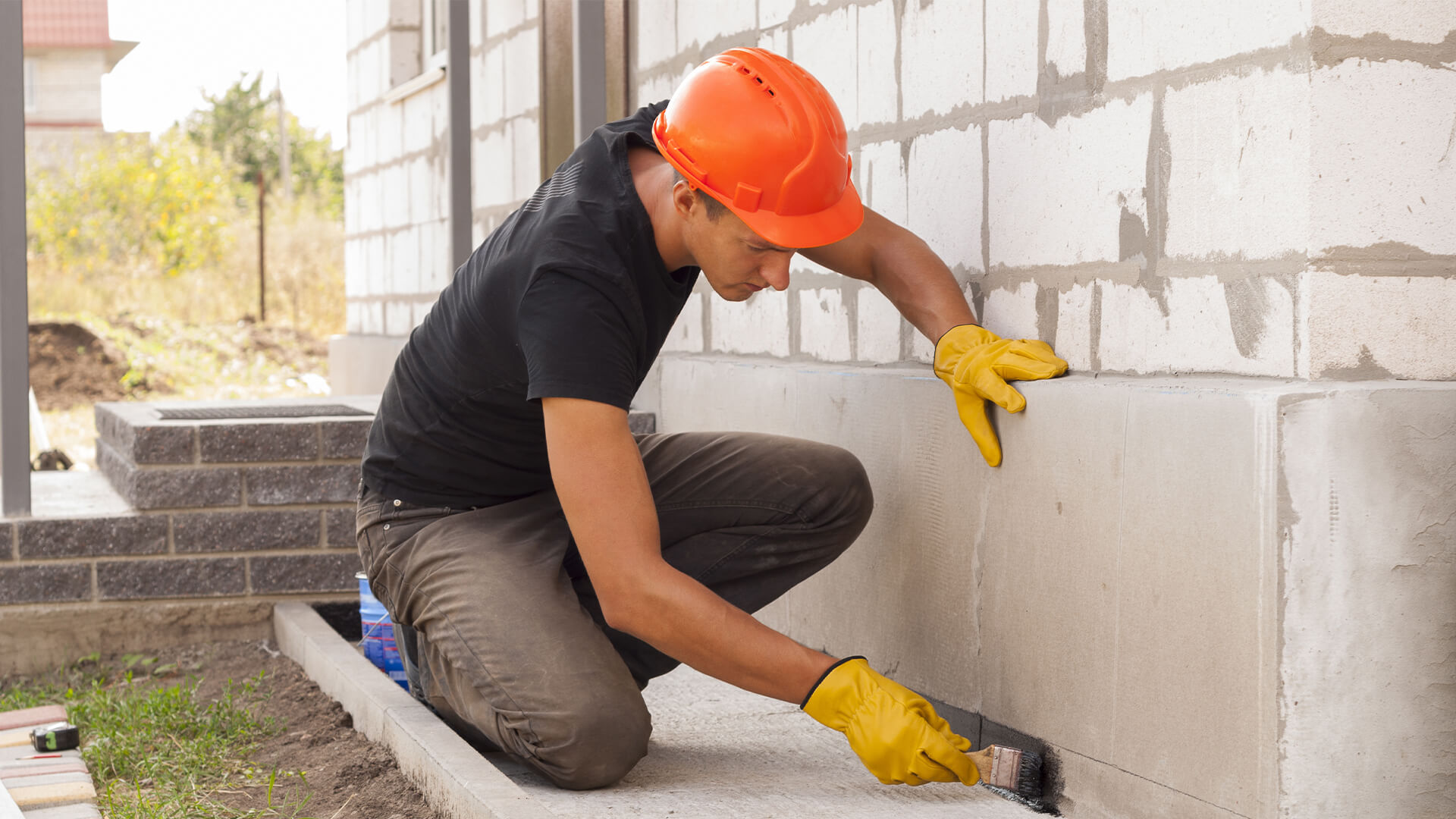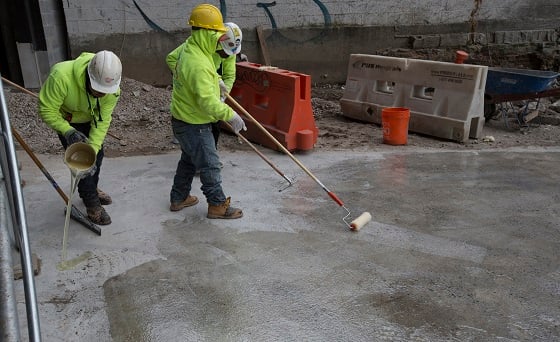Water Solutions That Withstand Omaha Weather: Weather-Tested Systems
Wiki Article
Types of Waterproofing: Exploring the Various Approaches and Their Applications
Waterproofing is an essential element of building and upkeep. It safeguards frameworks from the detrimental effects of water damages. There are a number of methods available, each with its unique applications and advantages. From membrane layer systems to cementitious options, understanding these options is essential for reliable application. The choice of waterproofing approach can greatly impact durability and long life. Exploring these numerous methods reveals their distinctive advantages and possible difficulties, motivating additional factor to consider of optimal solutions.Membrane Layer Waterproofing Systems
Membrane waterproofing systems offer as an important barrier against water intrusion in numerous structures. These systems normally consist of thin sheets made from materials like rubber, thermoplastic, or asphalt, which are related to surface areas to stop dampness infiltration. They can be set up over or listed below grade and are specifically effective in areas susceptible to high water direct exposure, such as cellars, roofings, and foundations.The installation process includes cleaning up the substratum, applying adhesives or primers, and exactly suitable the membrane to guarantee full coverage. Membrane systems can be either totally stuck, mechanically connected, or laid loose, relying on the certain requirements of the task. They provide sturdiness and flexibility, fitting structural movements without compromising their waterproofing abilities. In addition, these systems can be reinforced with added layers for enhanced defense. Inevitably, membrane waterproofing systems are essential for safeguarding frameworks versus water damage and keeping long-term honesty.Liquid-Applied Waterproofing Coatings
Liquid-applied waterproofing layers supply a versatile option for securing surfaces from water infiltration - Basement waterproofing Omaha. These coverings consist of fluid products that, when applied, create a seamless, flexible membrane. Their flexibility permits application on numerous substrates, consisting of concrete, steel, and wood. The layers can be used in varied environments, from domestic to industrial setups, making them suitable for roofings, foundations, and below-grade structures.One substantial advantage of liquid-applied coatings is their capability to comply with uneven shapes and pass through fractures, developing a robust obstacle against dampness. They typically show excellent attachment buildings and resistance to UV radiation, making sure longevity and longevity. Furthermore, the application procedure is normally uncomplicated, enabling for quick setup and lowered labor costs. This technique likewise minimizes the danger of water merging, as the continuous layer efficiently routes water far from at risk areas. In general, liquid-applied waterproofing layers are an efficient selection for detailed water defenseCementitious Waterproofing Solutions

Cementitious waterproofing remedies offer a durable option for structures needing dependable wetness defense. These systems mainly utilize a mix of cement, sand, and chemical ingredients to produce a water-proof obstacle. They are often used to surfaces such as concrete walls, structures, and floorings, offering a resilient, lasting protection against water intrusion.One of the crucial benefits of cementitious waterproofing is its convenience of application; it can be used making use of a brush, roller, or spray, making it ideal for different job sizes. In addition, this approach works with many surfaces and can often be used in conjunction with other waterproofing techniques.Cementitious services are particularly reliable in environments where water exposure is an issue, such as cellars or below-grade frameworks. Their superb attachment residential properties assure that they bond well with substrates, offering a solid and impermeable layer against moisture infiltration.
Bentonite Waterproofing
Bentonite waterproofing is a very reliable technique that uses sodium bentonite clay to produce an all-natural barrier against water. This technique manipulates the special buildings of bentonite, which expands upon contact with water, sealing any kind of possible leaks and preventing moisture seepage. It is commonly utilized in numerous applications, consisting of foundation walls, passages, and keeping wall surfaces, where water resistance click site is essential.Bentonite can be applied in several forms, such as panels or coverings, giving flexibility in setup. Its ability to self-seal makes it an attractive choice for locations based on changing soil or changing water degrees. Additionally, bentonite waterproofing is eco-friendly, as it is an all-natural material that does not introduce unsafe chemicals right into the environments.Drain and External Waterproofing Systems
Efficient waterproofing often entails a combination of approaches, including water drainage and external systems. Drainage systems, such as French drains click here to find out more and sump pumps, are made to redirect water far from frameworks, decreasing hydrostatic stress against foundations. These systems are essential in stopping water build-up that can bring about structural damage and mold and mildew growth.External waterproofing, on the various other hand, includes using protective barriers to the structure's outside. Methods such as the installment of waterproof membranes, finishes, or sealers can aid avoid water infiltration. This approach not just protects the structure but additionally improves the general durability of the structure.Together, drain and exterior waterproofing systems create an extensive option to take care of water successfully. By applying these approaches, building proprietors can safeguard their investments versus the harmful impacts of wetness, making certain long-term stability and safety for their buildings.Frequently Asked Inquiries
Exactly how Do I Choose the Right Waterproofing Approach for My Project?
Picking the ideal waterproofing method relies on factors such as job kind, environmental problems, budget, and wanted longevity. Evaluating these facets permits notified choices tailored to certain requirements and requirements.
Can Waterproofing Be Applied in Cold Weather Condition Issues?
Waterproofing can be applied in cool weather condition conditions, yet it calls for details products and methods. Cold temperatures might influence curing times and bond, necessitating mindful choice of items created for low-temperature application.
What Are the Common Indications of Waterproofing Failure?
Typical signs of waterproofing failing include visible water stains, peeling blog off paint, wet odors, mold and mildew growth, and cracks in walls or structures. Sump pump discharge drainage Omaha. These indicators suggest that moisture is permeating the obstacle, compromising its efficiencyHow Much Time Does Waterproofing Last Prior To Needing Maintenance?
The long life of waterproofing differs, usually lasting between 5 to ten years. Variables such as worldly top quality, environmental conditions, and upkeep practices influence its longevity, necessitating periodic inspections to assure efficient security versus water breach.Exist Eco-Friendly Waterproofing Options Available?
The concern of environmentally friendly waterproofing alternatives discloses an expanding interest in sustainable products (French drain installation Omaha). Numerous all-natural materials, such as plant-based sealers and recycled products, offer effective solutions while minimizing ecological effect, appealing to environmentally conscious customersReport this wiki page